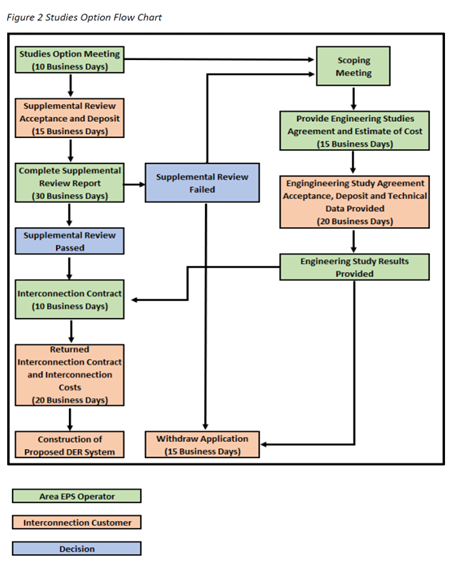We're hiring! Check out our opportunities on our careers page!
Our Office: 4100 32nd Ave. S. Fargo, ND 58104
Our Office: 4100 32nd Ave. S. Fargo, ND 58104
A DER is any device or system that generates or stores electrical energy interconnected to the utility electrical distribution system. DER technologies can include photovoltaic solar systems, wind turbines, energy storage batteries, diesel generators, etc., and are not limited to renewable technologies.
Cass County Electric Cooperative has adopted rules pertaining to the interconnection of Distributed Energy Resources (DER) to the electrical distribution system. It is required that the process be followed for any interconnection of a DER to the electrical distribution system. CCEC has two Board approved policies that pertain to the interconnection of renewable generation to the CCEC electric distribution system.
Net-billing Policy Distributed Energy Resource Policy
The following documents have been prepared to explain the process of interconnecting a generation system with Cass County Electric Cooperative. They contain general overview information, including the process that needs to be followed to connect to CCEC's distribution system and the technical requirements that need to be followed.
Interconnection process document provides a comprehensive explanation of the interconnection process and requirements across all sizes of interconnections, up to 10 MW.
Applications for Interconnection Tracks Based on DER Size: The process and associated documents below are established based on the size (rating) of the DER system and the type of interconnection. These forms can be downloaded electronically, and the data blanks filled in electronically. Click on and fill out the appropriate application and return to:
DER Coordinator
Cass County Electric Cooperative
4100 32nd Ave S
Fargo, ND 58104
Tier I application Up to 20KW inverter-based systems - extended parallel.
Tier II application Up to 10 MW standby systems - open/closed transision, limited parallel, no extended parallel.
Tier III application 20 KW to 10 MW systems - extended parallel.
If you have any questions regarding the interconnection of a generation system to Cass County Electric's system, please call our engineering and operations department at 701-356-4455 (toll-free at 800-248-3293) or contact us here.
Below are typical flow charts for a more simplified interconnection vs. one requiring additional studies.


Frequently Asked Questions